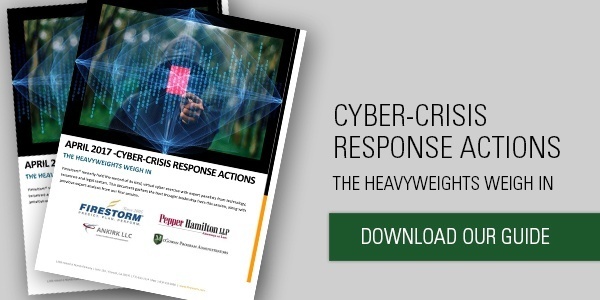Cyber attacks and data breaches have become a nearly inevitable part of doing business. According to Forrester, about 1 billion digital records were compromised in 2016, most of them from government agencies, retailers or technology firms. Organizations in all industries and of all sizes have found themselves subject to intrusions into their systems that are often costly and damaging to their reputations.
Attacks take many forms, from ransomware to distributed denial of service attacks, and waiting too long to take action could be disastrous for a business. To ward off cyber attacks, you need careful planning that takes into account best practices for handling the latest dangers and addresses the specific threats your organization faces.
1. Update your systems
“Company-wide policies should require regular updates and maintenance.”
One of the most basic, yet vital, ways a company can prevent hackers from gaining access to their systems is by keeping them up-to-date. Hackers often take advantage of vulnerabilities in older operating systems, antivirus programs or firewalls. By ensuring you have the latest versions of all software and removing anything you are no longer using, you block off these dangers.
Company-wide policies should be in place requiring regular updates and maintenance. Otherwise, adding further security measures will do little to stop intrusions that have already begun. Organizations can build in further protection by segmenting their network, so that a hacker gaining access to one device does not have free rein over the entire system.
2. Require authentication measures
Strong passwords and secure authentication are important tools for keeping unauthorized individuals out of key systems. If someone at the company uses the sames simple password for every login credential, it’s an easy way for a hacker to gain access. Instead, ensure all employees use a combination of capital and lower-case letters, numbers and special characters.
Instituting additional authentication measures is another wise step, providing a further layer of protection. As an increasingly common way of providing two-factor security, many restricted systems require users to enter a code they are sent via the cell phone short messaging system before allowing any remote login.
3. Offer extensive training
People can be either the greatest strength or the worst weakness of your security policy. Hackers are adept at using social engineering tactics to gain sensitive information or infect a system. Phishing emails probe for vulnerabilities, posing as trusted parties to convince workers to download malware or to turn over login credentials and personal information. According to the Internet Security Report from Symantec, one in 131 emails contained malware in 2016, with email scams going after more than 400 businesses a day.
While security programs can often fend off previously identified viruses or ransomware, employees must be the first line of defense. All workers at an organization should know that guarding against cyber attacks is a top priority and everyone’s responsibility. Offering regular training in how to spot fraudulent messages, back up data and follow security procedures may prevent disaster.
4. Protect your business with insurance
Part of planning ahead is preparing for when something goes wrong. An employee carelessly clicking on an email attachment or a vulnerability in an old program could offer a hacker access to some of a company’s most valuable data or result in users being locked out of the system entirely. In these cases, the business faces the possibility of lost revenue and even being held liable for compromised information.
By obtaining insurance coverage for cyber attacks, organizations protect themselves from the losses due to cyber attacks. McGowan Program Administrators offer a variety of policies designed to help companies in all industries get back to work after a hack or data breach. In a business world where cyber attacks have become a constant danger, leaders can’t afford not to plan ahead.



